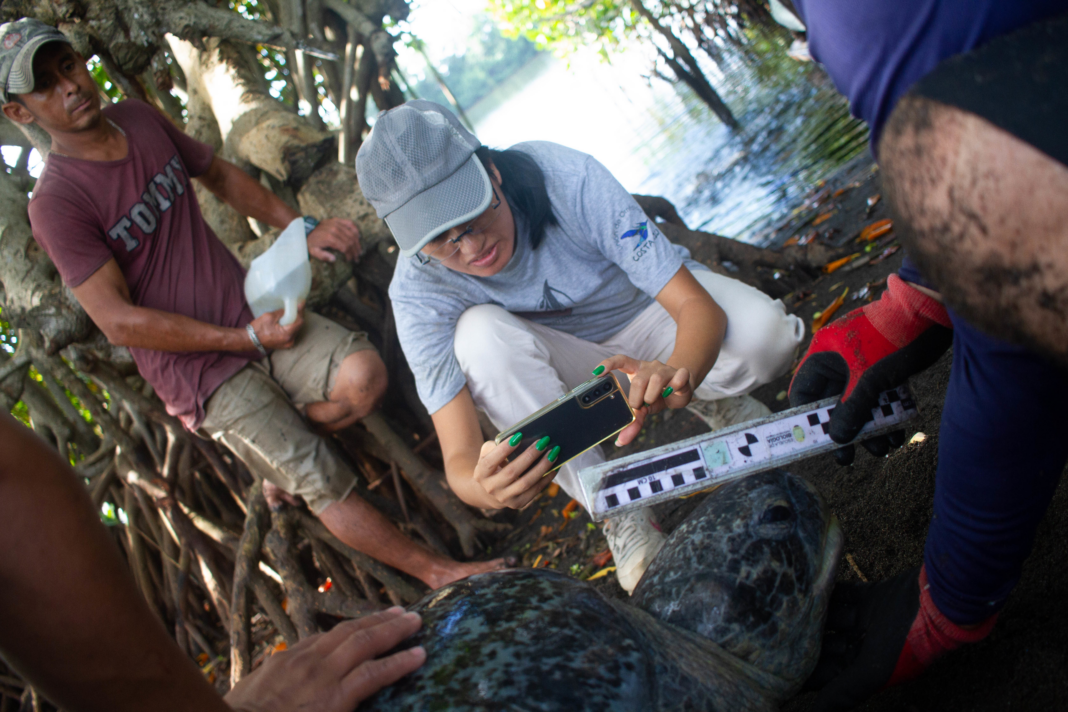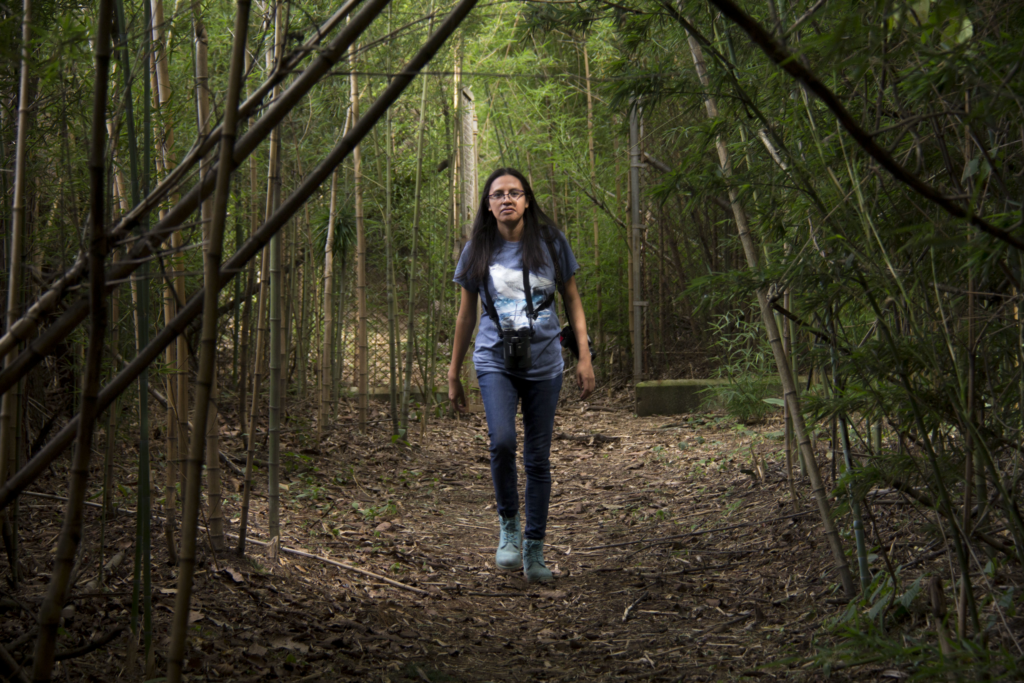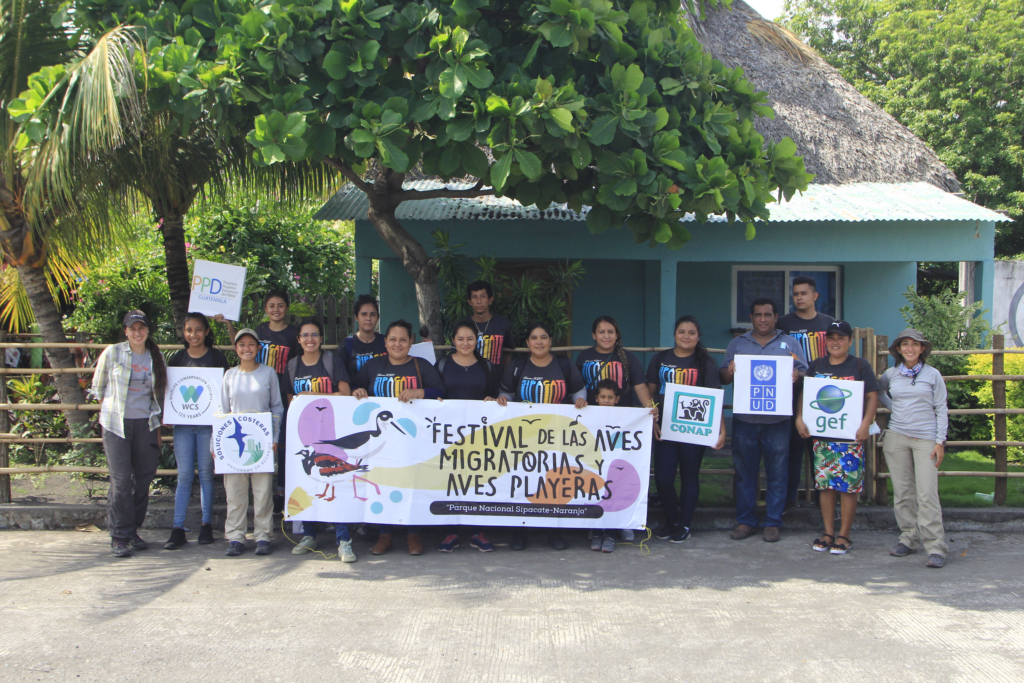A non-orthodox biologist fights for the protection of ecosystems in Guatemala by inviting local communities to participate.
In 2006, while holding a freshly caught bird in her hands for analysis and banding, Bianca Bossareyes, then a biology student, considered the conflict between what she was learning in the classroom and what she was seeing in the field. School taught classic conservation methodology focused on keeping landscapes pristine and devoid of human influence; in the field, however, it was clear that conservation could benefit from the participation of local people.
Those initial field expeditions provided Bossarreyes with a compass for her work. Over the years, she has participated in the creation of the national strategy for the conservation of the quetzal, the Guatemalan national bird, and in several other conservation projects that rely on the participation of local populations and keep those communities’ needs in mind.
“There was a misconception that our activities might pose a threat to the birds,” Bossarreyes explained. However, as she and her colleagues considered the purpose of biological monitoring and shared insights into the relationships between humans and these species, she came to the conclusion “that community awareness is pivotal to nurturing and protecting natural life. That realization left an indelible mark on me.”
Seventeen years later, Bossarreyes coordinates the south regional office of one of the oldest environmental NGOs in Guatemala, the Foundation for Eco-development and Conservation (FUNDAECO), where she helps launch programs aimed at enlisting those who live throughout the Pacific coast region of Guatemala to help protect the environment and improve their lives. “We have to see the benefit of conserving nature and supporting the people who cohabit with it,” Bossarreyes said.
In 2019, Bossareyes’ work monitoring migratory shorebirds along the Guatemalan Pacific led to the inclusion of Guatemala in a continental network to protect ecosystems of interest to this group of birds, the publication of the country's first shorebird guide, the development of training programs for park rangers and residents of coastal communities, and the celebration of a shorebird festival. She decided to leave the noise of Guatemala City and move to a small coastal community — with the nation’s second most cases of chronic malnutrition. The community is home to artisanal salt producers and fishermen, and Bossareyes helps those who want to start businesses rooted in sustainability. “It's essential for us to learn more about all the life around us, because then we’ll know how to take better care of it,” said Sandra Alvarado, one of the twenty-five community tour guides trained by Bossareyes during the pandemic.
Improper management of Guatemala’s natural resources can keep people in a cycle of poverty. Most of the coastal population depends on consuming fish, shellfish, turtle eggs, and other local products. And with a lack of job opportunities and income, locals use mangroves — crucial to the ecosystem — to construct their houses.
Helping people incorporate new habits into their relationship with nature takes work, especially, she says, in rural Guatemala, where levels of illiteracy, malnutrition, and unemployment are the highest in Latin America. Those in the country’s rural communities are distrustful of outside intervention because they have been subject to so much dispossession and exclusion. Gaining their trust requires spending time with them.
Bossareyes’ diverse projects revolve around pulling in the community to implement conservation strategies that also improve their lives and livelihoods. For example, she collaborated with artisanal salt producers to adjust their production practices to protect shorebirds. In exchange, producers benefit in a variety of ways, from environmental education for their children to food assistance, to the establishment of a tourist circuit centered around salt production.
Supported by FUNDAECO, and, for the moment concentrated in Sipacate, the region where Bossareyes is based, there are plans to expand these initiatives to all coastal towns in Guatemala. The goal, Bossareyes said, is to encourage the safeguarding of mangroves, mammals, and nature at large by empowering local communities who live there. “We’ve moved beyond the outdated notion of pure conservation without the active participation of the people living in these regions,” Bossareyes said. Her strategic approach — to deliver tangible benefits to the people who make these areas home — can be transformative, not only within her country but across the entire Central American region. “Our vision includes supporting women entrepreneurs and providing study scholarships,” she said, noting that “my commitment is long-term — I aspire to be a lifelong guardian of Guatemala’s Pacific.”





